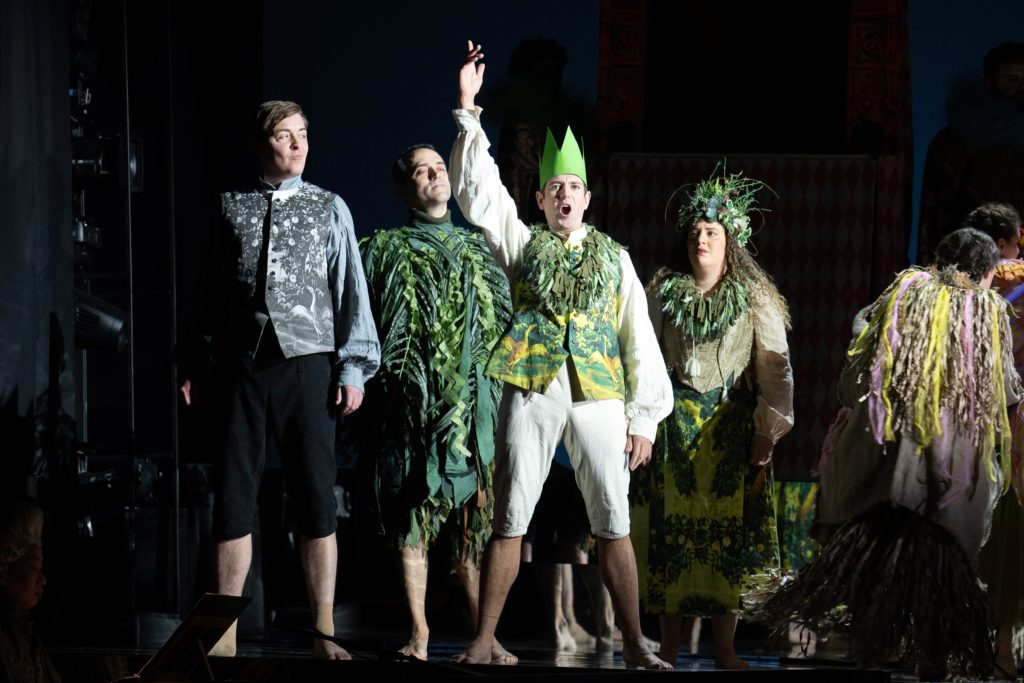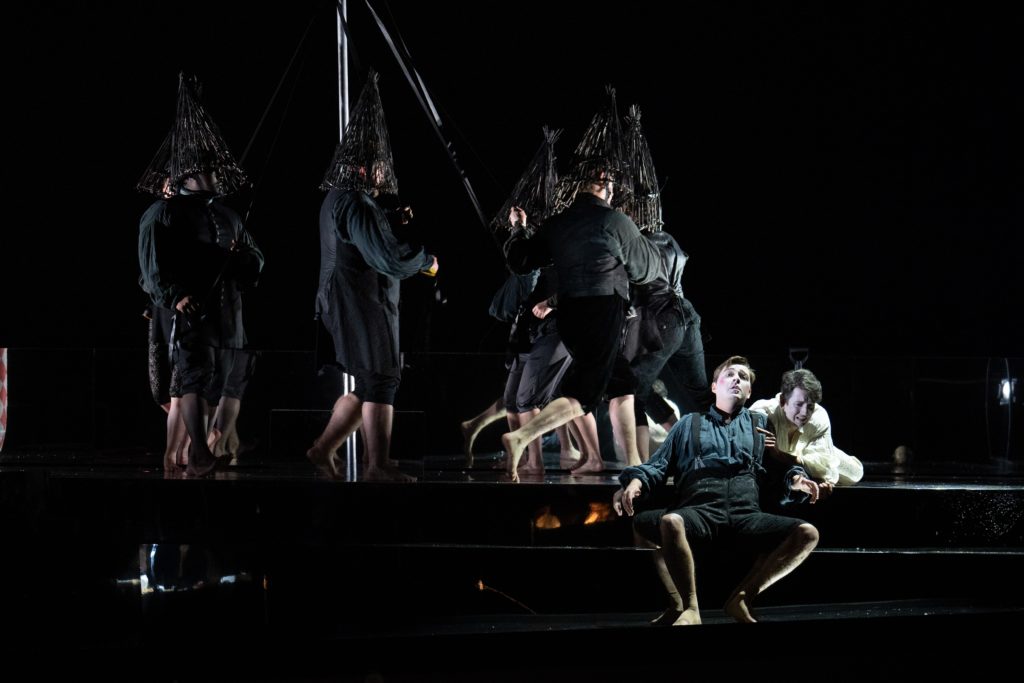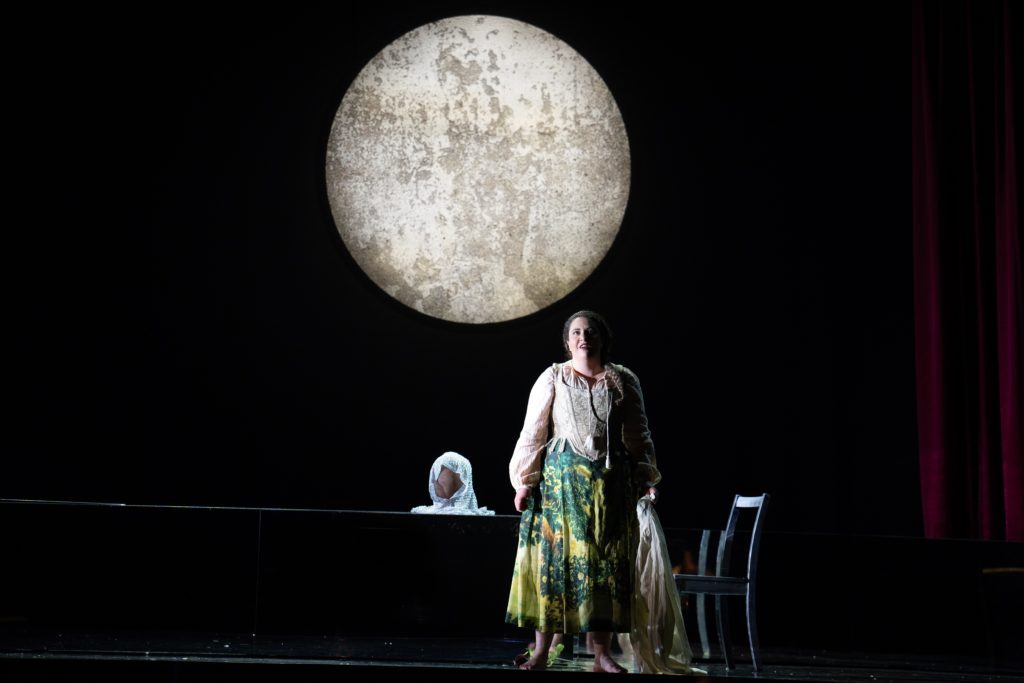
STRAVINSKY’S The Rake’s Progress is a great opera and English Touring Opera’s production was very good indeed, but it wasn’t without its problems.
I thought one of the issues would be quality of sound delivered by the ETO orchestra in the Theatre Royal pit. Not a bit of it. The short opening prelude, introduction really, was rhythmically razor sharp, every instrumental detail crystal clear both here and throughout the entire work.
Of course, this is not a surprise given the quality of the players, but conductor Jack Sheen must take much of the accolades; he was superb. And young. And clearly one to be watched.
Polly Graham’s direction was highly intelligent, but busy. I know it is a fine line between breathing life into a form in which stasis is the norm. But there was just too much movement at times and for no seemingly obvious purpose.
I had problems with April Dalton’s design at the start of the First Act; it was too full both physically and metaphorically. The detail overload included a maypole, Punch and Judy pantomime box and singers with masks. OK I get it. The masks reference Greek Theatre which, like Stravinsky’s neo-classical opera, represents distance, objectivity.

This also alludes to the Greek tragedies: the character flaw and what dramatically unfolds with a bit of catharsis at the end: the devil makes work for idle hands.
But why the Punch & Judy reference? Well, this was a traditional seaside, working-class puppet show. The devil and hangman Jack Ketch make an appearance and (deep breath) the character Mr Punch was begotten from the commedia dell’arte Neopolitan character, Pulcinella; the title of Stravinsky’s ballet.
What I did admire about Ms Graham’s direction and Ms Dalton’s design was that they took chances. It was memorable. And I suspect that many of the issues mentioned above would not have been so critical in a larger theatre space.
The opening scene between Tom Rakewell (tenor Frederick Jones) and Anne Trulove (soprano Nazan Fikret) takes place at a May Day festival. The balance between soloist and an excellent chorus was not good. It was particularly difficult to hear Nazan Fikret that clearly, especially in her lower register.
Having said that, Ms Fikret sang superbly throughout. She has a lovely tone and there was real feeling and convincing dramatic conviction. However, I thought the image of her dressed in Wagnerian battle mode to rescue Tom was a bit naff; it is supposed to be salvation through love, through goodness.

A lot of Ms Graham’s casting did work really well, not least the image of Tom and Shadow as alter egos. The black-and-white dress, even in the shadow boxing match. Jerome Knox (baritone) was an utterly convincing Shadow, dripping with elegant charm and seductive malevolence.
Another standout performer was mezzo- soprano Lauren Young as the bearded lady Baba. She was confident, funny and compassionate. Quite a remarkable achievement for a woman with a two-foot beard.
Amy J Payne proved to be a very seductive Mother Goose; that provocative, surrealist costume was alarming to say the least.
The take on turning water into wine, here stone into bread, as a means to end famine, and offer a path to redemption and recapture Anne’s heart, was very effective as were the consequences of this folly in the auction which included Baba herself. There is a cruel price to pay. After a year and a day and a game of cards, Tom is left half alive and half dead: Shadow’s curse is insanity.
Frederick Jones, utterly brilliant throughout, sang the final Bedlam scene with such heartbreaking tenderness. Not a dry eye in the house, I expect. Then, like Mozart’s Figaro, the soloists and chorus re-enter the stage to reassure us it’s only make-believe, to be mindful of idle hands and have a safe journey home. Oh yes, and that “good or bad, all men are mad”.
Review by Steve Crowther
